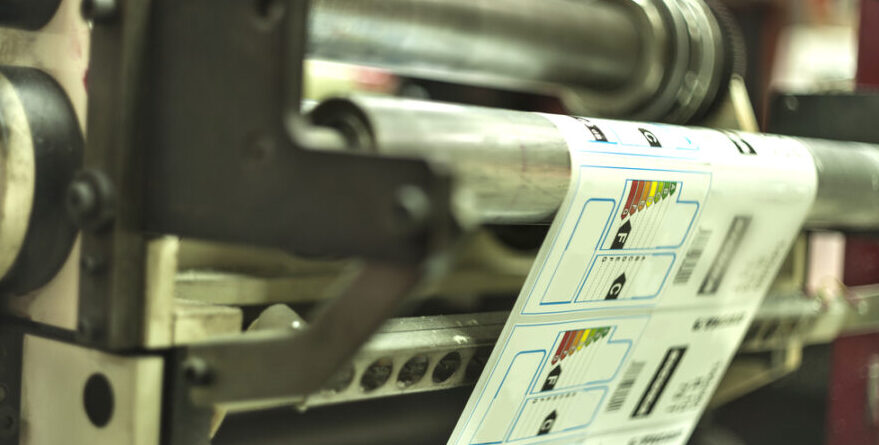Labelling provides sensory experiences for consumers and fulfils informative, safety assurance and traceability functions
Label printing is an increasingly sophisticated industrial printing speciality that is undergoing constant development thanks to technological advances, both in terms of the machinery and the materials used, the diversity of which is growing steadily. Advances also concern the functionality of labels, which nowadays goes far beyond mere product identification. Labelling provides consumers with sensory benefits as well as informational, safety and traceability functions. Modern printing presses offer so much quality that labels can be customised to suit the customer’s needs, enabling producers to differentiate themselves from the competition by combining a wide variety of techniques.
However, it must be said that the decorative and promotional use of labels dates back more than a century. Printing techniques had already sufficiently evolved to produce patterns and colour transitions that embellished wine and beer bottles or food cans. By applying glue to the substrate, self-adhesive labels were born, one of the innovations that gave a definite boost to the development of functions in addition to mere identification.
Today, labels can contain various types of digital identification, such as barcodes, QR or Datamatrix; using different techniques and substrates, they can generate all kinds of effects to provide interesting experiences for consumers, thereby enhancing their loyalty.
What types of labels can be found?
When it comes to designing and producing a label, imagination is the only limit: from traditional paper labels with a simple print, to those made of artificial materials, with uneven shapes, relief, and different aesthetic effects, through the use of different types of ink and printing techniques. The aim is to stand out, to create a hallmark that highlights the quality of the product it accompanies.
Moreover, as we have already noted, in critical industries such as food and pharmaceuticals, labels are a key element in guaranteeing quality and public health. Technological development has made it possible to assign them, among others, the function of protection against counterfeiting or possible breaks in the cold chain, as well as to track each item in real time with information on its route through the supply chain, providing a great help in logistical, transport and storage tasks.
Labels can also have an inclusive function. Legislation requires medicines, chemicals and consumer products to be labelled in Braille so that blind people can identify them. The embossed dots that make up the Braille language are achieved by screen printing.
What is the most convenient label and its printing process?
When deciding on a type of label, as well as on the most suitable production process, you need to analyse your needs and the results you want to achieve. Thus, some of the issues you can’t forget:
- The kind of material and its cost. The existing variety of options is very large: self-adhesive labels, shrink, laminated, in-mould, metallised, transparent, flexible packaging, flexible, etc.
- Printing and processing: How many colours are needed? >Do you want to use e gradients or other decorative effects? Sheet-fed or web printing? How many labels are to be printed?
- Durability. Labels must be guaranteed to be functional at least until the product reaches the consumer so the material and type of printing chosen must ensure that they are resistant to the environmental conditions the item will be exposed to. For example, the resistance capacity required for a wine bottle label is very different from that of a car engine.
- The required labelling speed and the cost of having the production line down for roll changes or maintenance.
- Additional requirements. For security labels, need to incorporate protection systems against unauthorised opening or against reloading, among other possibilities.
Label printing techniques
Offset, flexo, screen, digital? The choice of which printing technique to use depends on several factors: the function of the label, the volume of the print run, the quality required, the number of colours, the type of ink, the material chosen, and the finishing processes needed. And the point is that thanks to technological developments, offset printing offers a handful of very significant advantages:
- Compared to conventional label printing processes, such as flexographic printing, offset provides the same quality as digital technology.
- Offset printing costs are becoming increasingly cost-optimised, allowing to reach earlier the point where it becomes economically advantageous compared to digital printing.
ROTATEK machines, thanks to their modular configuration, make it possible to combine the necessary technologies to achieve maximum quality in the printing of all types of labels, on any material, and with total personalisation. Ask us.

